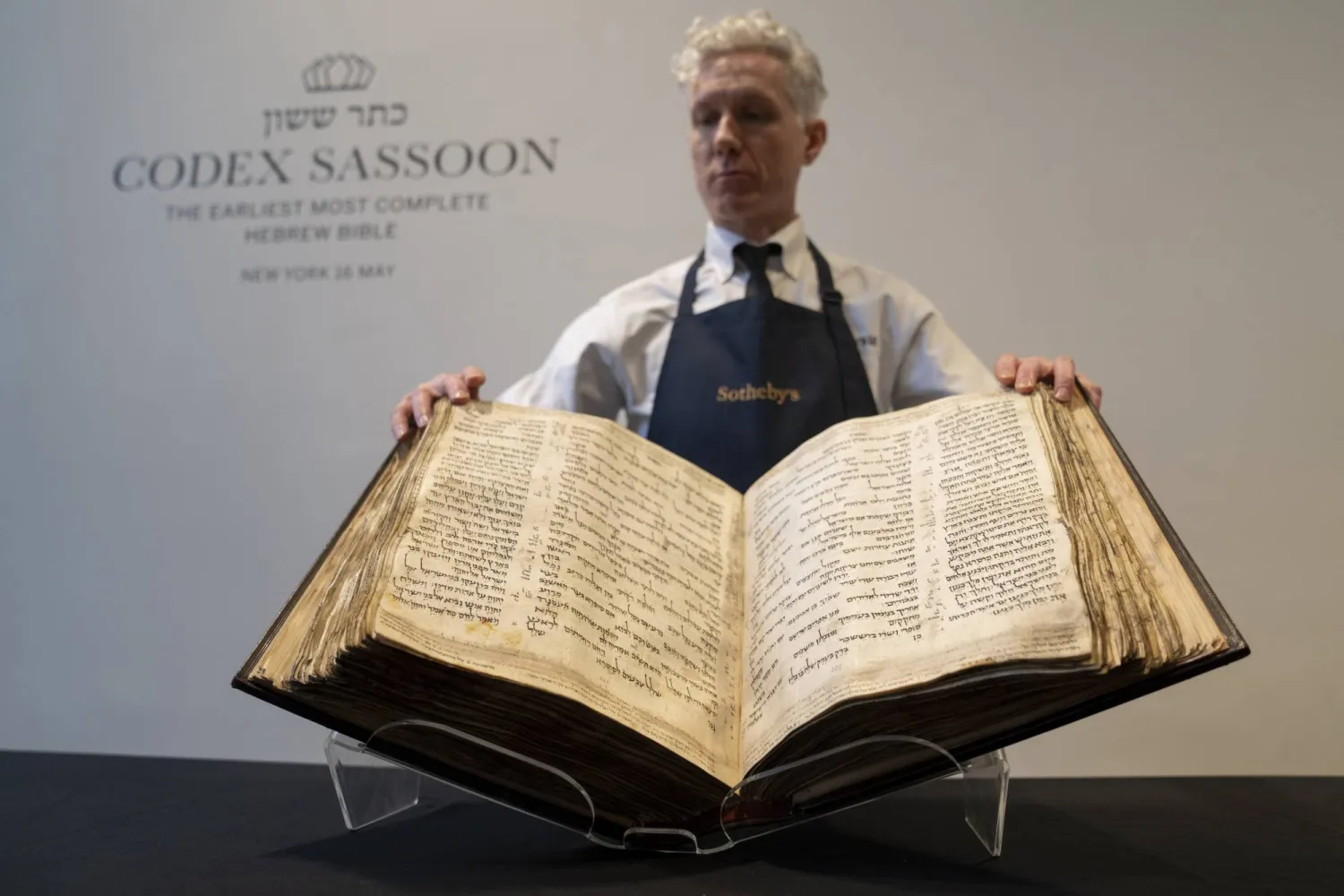The world's oldest and most complete Hebrew Bible sold for $38.1 million om New York on Wednesday, Sotheby’s said, one of the highest prices ever for a book or document sold at auction.
Wednesday's winning bid for the Codex Sassoon was made via a donation by Alfred H. Moses, a former US ambassador and president of the American Jewish Committee, who is giving it to the ANU Museum of the Jewish People in Tel Aviv, Israel.
The price surpasses the $30.8 million paid in 1994 for Leonardo da Vinci’s Codex Leicester manuscript, Sotheby's said. But it was below the estimated $50 million that Sotheby's said in February it could sell for and below the $43.2 million paid in 2021 for a first edition of the US Constitution, the world record for any book or document.
Sotheby's Judaica specialist Sharon Liberman Mintz said the price tag, which includes the auction house’s fee, "reflects the profound power, influence, and significance of the Hebrew Bible, which is an indispensable pillar of humanity.”
The Codex Sassoon, fabricated sometime between 880 and 960, is named after a previous owner, David Solomon Sassoon, who acquired the Bible in 1929 and assembled one of the most significant private collections of Judaica and Hebraica manuscripts of the 20th century.
The document offers a critical link bridging Jewish oral tradition to the modern Hebrew Bible. It was not until recently that former owner, collector Jacqui Safra, had the Codex Sassoon carbon dated, confirming it was older than the Aleppo Codex and the Leningrad Codex, two other major early Hebrew Bibles, according to Sotheby's.
The auctioneer said the Codex Sassoon had been dated to either the late 9th or early 10th century on
both scientific and paleographic grounds and contains almost the entirety of the Bible. The oldest copies of Biblical text ever found were the Dead Sea Scrolls, which were discovered in caves in 1947.
The Hebrew Bible contains 24 separate books organized into three parts — the Pentateuch, the Prophets, and the Writings. Starting with the book of Genesis and ending with Chronicles, the Hebrew Bible is foundational to Judaism, as well as Christianity and Islam.









